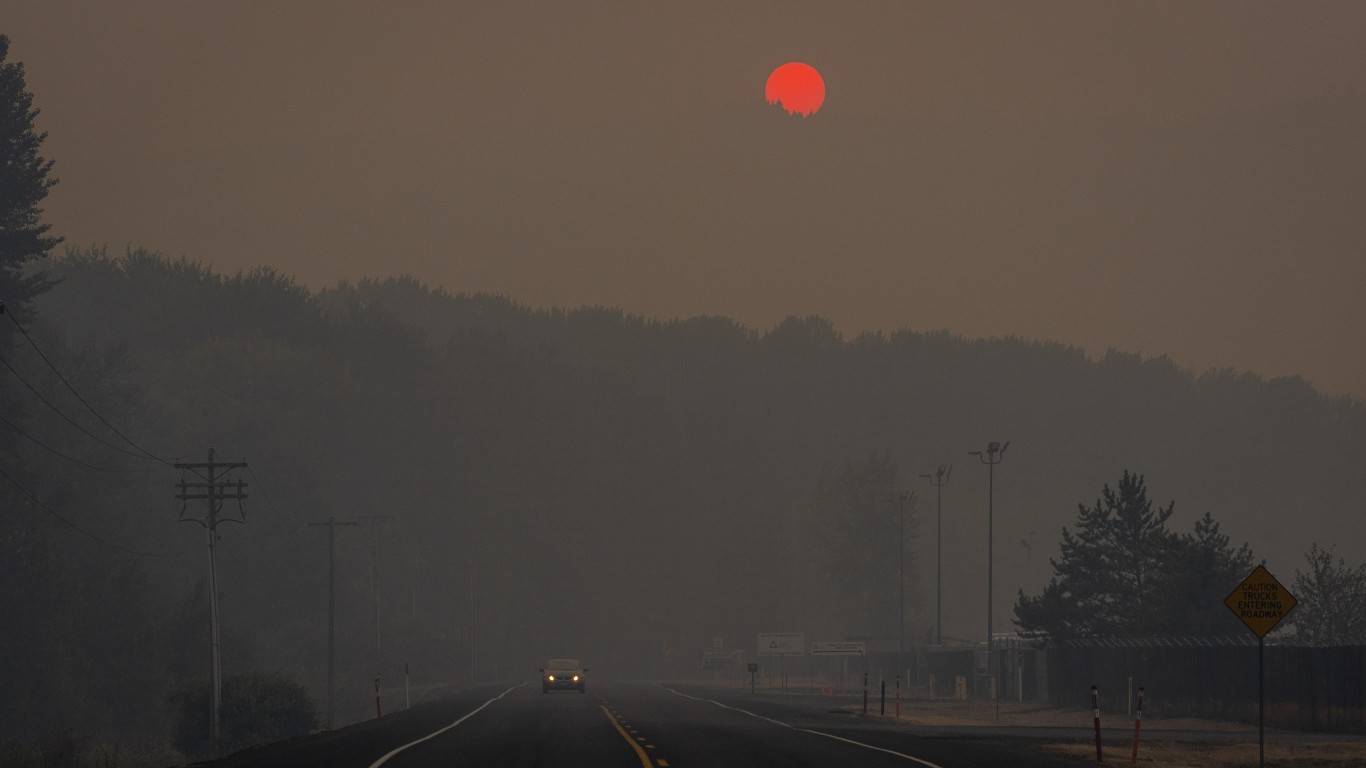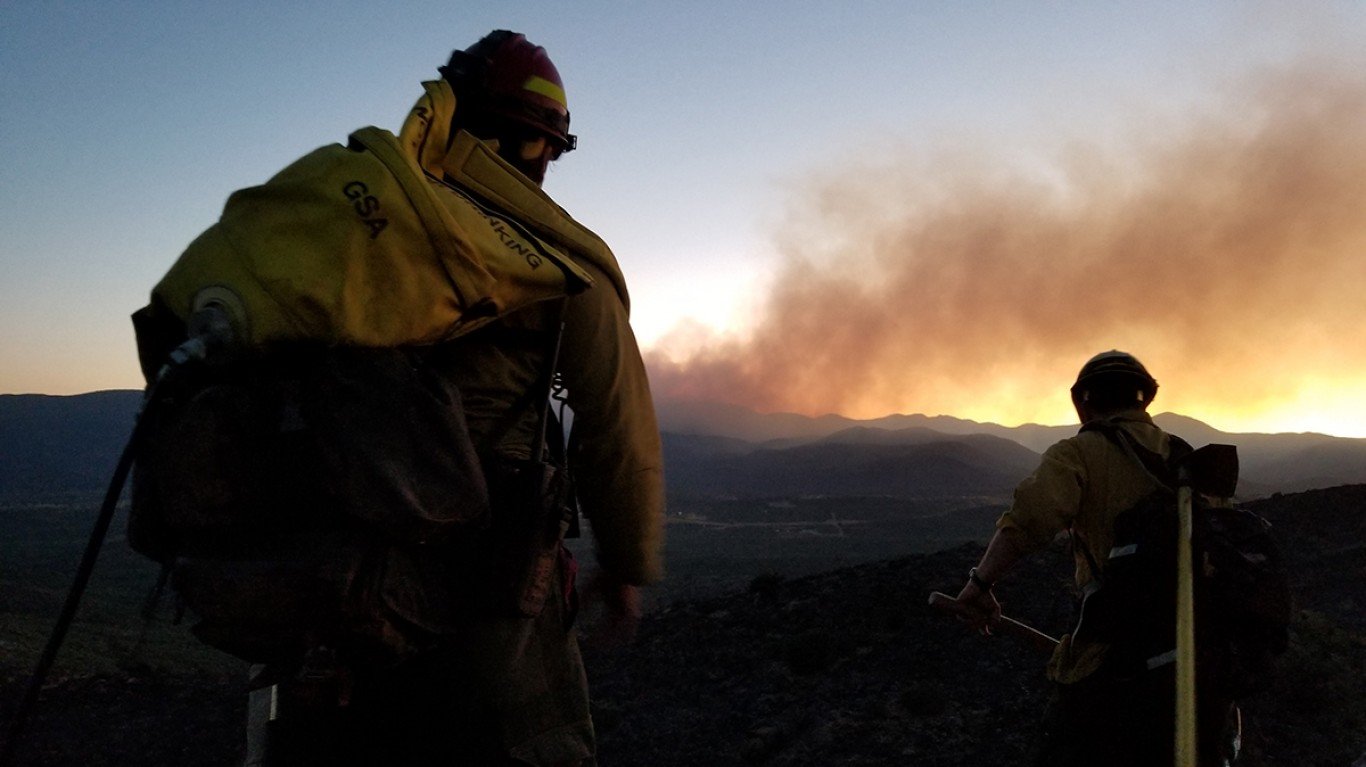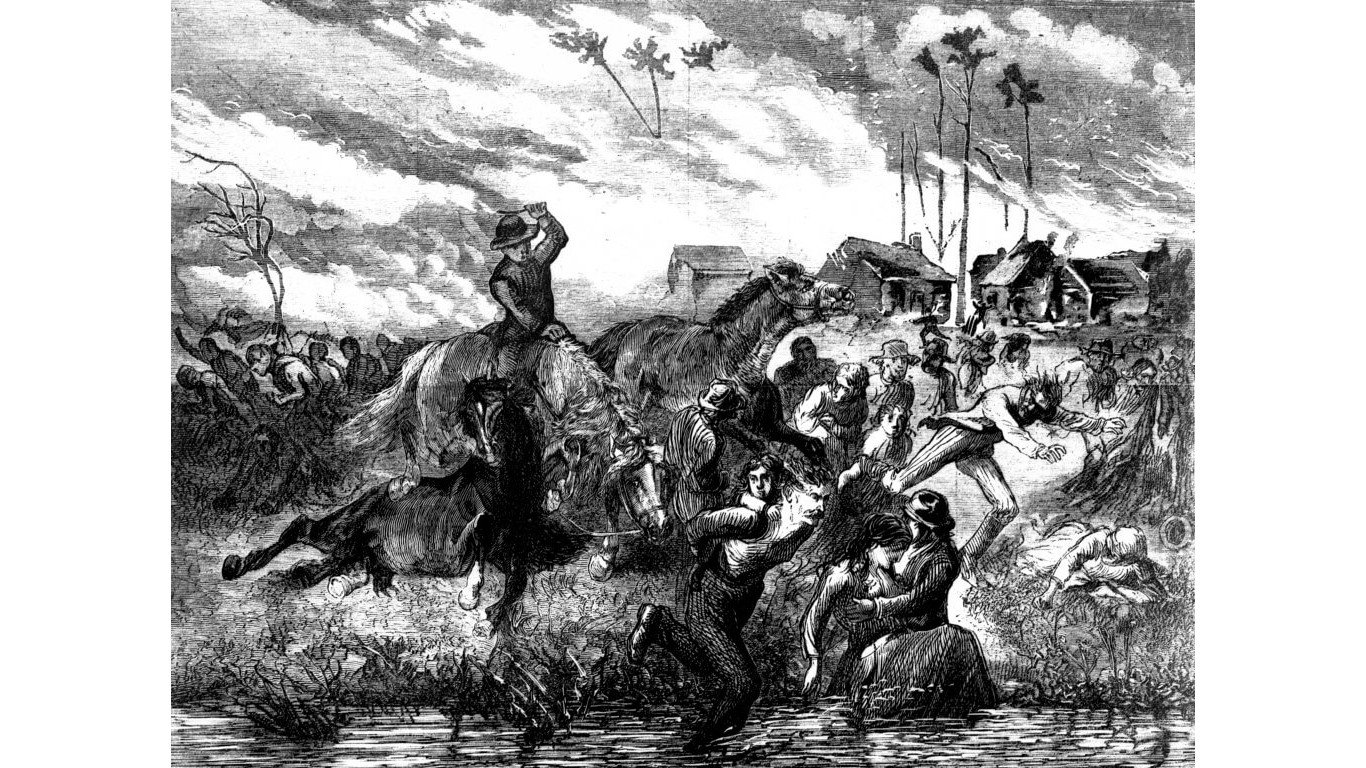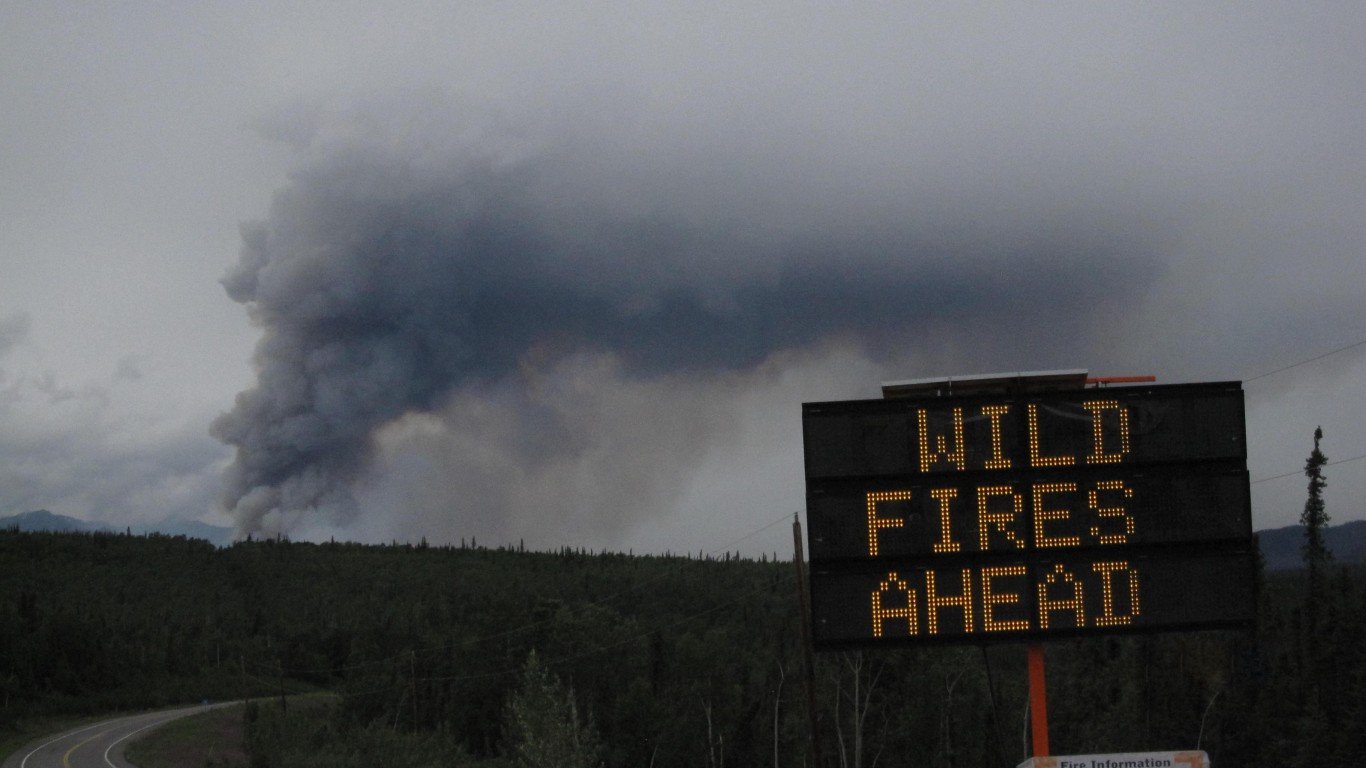
13. The Thumb Fire of 1881
> Total acreage estimated: 1 million acres
> Area affected: Central Michigan
> Date: September 1881
> Acres burned equivalent: Five times the size of New York City
This wildfire started in early September as a result of drought, hurricane-force winds, heat, and the ecological damage that was the result of the logging techniques of that time. Also known as the Great Forest Fire of 1881, the blaze killed over 275 people and destroyed more than 3,000 buildings.

12. 2020 Oregon Wildfires
> Total acreage estimated: 1 million
> Area affected: Oregon
> Date: August to November 2020
> Acres burned equivalent: Rhode Island
These fires are known as some of the most destructive on record in the state of Oregon. They were part of an especially destructive wildfire season that year. These fires were responsible for the deaths of 33 people and the destruction of thousands of homes in the region.
11. Taylor Complex Fire
> Total acreage estimated: 1.3 million acres
> Area affected: Central and Eastern Alaska
> Date: May to August 2004
> Acres burned equivalent: One fourth of Massachusetts
The Taylor Complex Fire was part of Alaska’s record breaking fire season in 2004. At the time, it was the single largest wildfire in the United States between 1997 and 2007. This fire played a large role in Alaska’s fire season that year, which saw a total of 6.6 million acres burned.

10. 2017 Montana Wildfires
> Total acreage estimated: 1.3 to 1.4 million acres
> Area affected: Montana
> Date: June to September 2017
> Acres burned equivalent: Three-times the size of Houston, TX
Drought was largely responsible for much of the destruction in Montana caused by a series of fires. Fortunately, rain and snow slowed what would have been an even more devastating blaze.

9. Peshtigo Fire of 1871
> Total acreage estimated: 1.2 to 1.5 million acres
> Area affected: Northeastern Wisconsin
> Date: October 1871
> Acres burned equivalent: Three-times the size of Jacksonville, FL
The Peshtigo Fire was an especially large forest that covered most of the southern half of Michigan’s Upper Peninsula. This fire is often overshadowed by the Great Chicago Fire that occurred on the same day, despite the fact that the Peshtigo Fire claimed over 1,200 lives, five times as many as the Great Chicago Fire.






